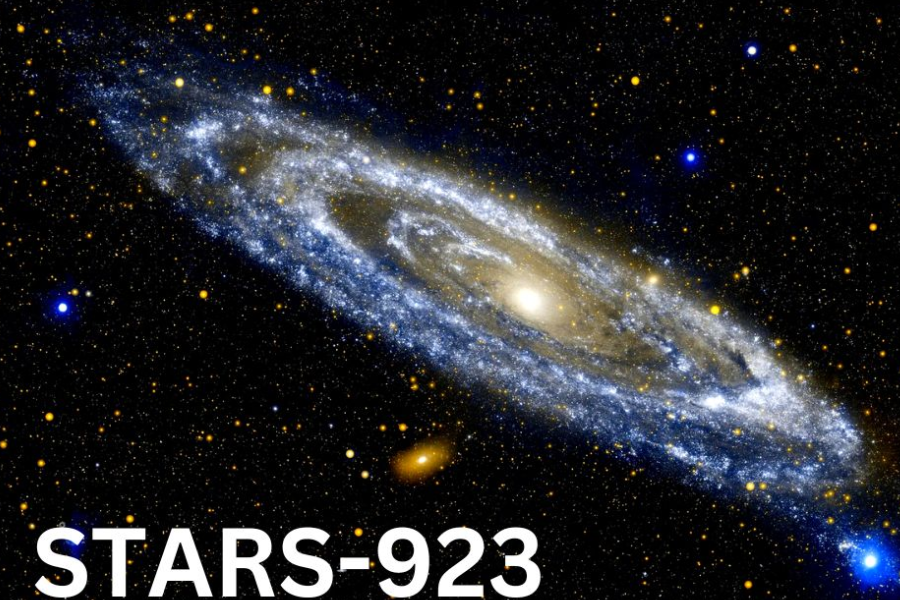Introduction
Stars have long captivated human imagination, twinkling in the night sky like distant beacons of light. Each star, including the mysterious Stars-923, tells a story as old as time itself. From their formation to their final stages, stars offer a glimpse into the vast mysteries of the universe, intriguing both astronomers and poets alike. Stars-923, though distant and unnamed by humanity, represents a celestial wonder that embodies the essence of cosmic curiosity. This article explores the intricate details of stars, their significance in the universe, and how they shape our understanding of existence.
The Birth of Stars
Stars, including Stars-923, begin their journey in vast clouds of gas and dust known as molecular clouds. Over millions of years, gravity pulls these materials together into dense cores where temperatures and pressures become so extreme that nuclear fusion ignites—a process that fuels a star’s radiant energy.
Stellar Nurseries
Stars-923 was born in a stellar nursery, a region rich in the raw materials needed for star formation. As gravity pulls gas and dust together, conditions become just right for new stars to emerge. This process involves several stages, from the initial collapse of the cloud to the formation of a protostar and eventually, the ignition of nuclear fusion.
Nuclear Fusion
At the core of Stars-923, nuclear fusion converts hydrogen into helium, releasing an immense amount of energy that causes the star to shine brightly. This process powers the star throughout its life. As hydrogen nuclei fuse to form helium, they release photons that radiate outward, producing the light we see.
The Classification and Types of Stars
Stars, including Stars-923, vary greatly in size, color, and temperature. They are classified based on their spectral characteristics and size, ranging from massive giants to tiny dwarfs. These classifications not only describe a star’s appearance but also offer insights into its life cycle and interactions within the galaxy. Stars are categorized into various types, including main sequence stars, red giants, white dwarfs, and neutron stars, each with distinct properties and evolutionary paths.
The Life Cycle of Stars-923
Like all stars, the life cycle of Stars-923 is determined by its mass. Smaller stars burn fuel slowly over billions of years, while larger stars undergo dramatic changes, often ending in explosive supernovae or the formation of mysterious remnants like neutron stars or black holes. Stars-923’s life cycle includes stages such as the main sequence, red giant, and finally, the end stage, which could be a white dwarf or an explosive supernova.
Main Sequence Stars
Stars-923 spends most of its life as a main sequence star, burning hydrogen in its core and maintaining a stable existence. This phase can last anywhere from millions to billions of years, depending on the star’s mass. Main sequence stars are characterized by a balance between the inward pull of gravity and the outward pressure from radiation.
Red Giants
As Stars-923 exhausts its hydrogen fuel, it expands into a red giant. During this phase, the outer layers of the star swell while the core contracts, setting the stage for the star’s eventual fate. The red giant phase is marked by a significant increase in size and luminosity as the star begins fusing heavier elements in its core.
The Death of Stars-923
The final stage of Stars-923’s life depends on its mass. Smaller stars, like our Sun, shed their outer layers and leave behind a white dwarf. More massive stars might end their lives in spectacular supernovae, leaving behind neutron stars or black holes. This process involves complex nuclear reactions and dramatic transformations.
White Dwarfs
For stars like Stars-923, the end of their life cycle results in the formation of a white dwarf, a small, dense remnant that no longer undergoes fusion but radiates heat for billions of years. White dwarfs are the final stage for stars that were not massive enough to explode as supernovae, representing the cooling remains of what was once a bright star.
Neutron Stars and Black Holes
If Stars-923 were significantly more massive, its death could result in the creation of a neutron star or a black hole. Neutron stars are incredibly dense, while black holes have gravitational fields so strong that not even light can escape. Neutron stars form when the core of a massive star collapses, resulting in an object with a mass similar to the Sun but compressed into a sphere about 10 miles in diameter. In contrast, black holes form when the core’s mass becomes so great that it collapses to a point of infinite density.
Stars-923’s Role in the Galaxy
Stars-923, like other stars, plays a crucial role in shaping the galaxy. It contributes to the formation of planetary systems, disperses heavy elements through supernova explosions, and influences the development of stellar nurseries where new stars are born. The presence of stars like Stars-923 helps shape the structure of the galaxy and contributes to the ongoing cycle of star formation and death.
Elements from Stars
Stars-923 produces and disperses the elements necessary for life. Through nuclear fusion and supernova explosions, stars create elements such as carbon, oxygen, and iron, which are the essential building blocks of planets and life. These elements spread throughout the galaxy, enriching the interstellar medium and providing the raw materials for future stars and planetary systems.
Observing Stars-923
Modern astronomy uses advanced tools like telescopes, spectrographs, and space observatories to study stars like Stars-923 and their environments. These instruments reveal information about their composition, temperature, and motion through space, allowing scientists to piece together the details of their physical properties, chemical makeup, and role in the galaxy.
Telescopes and Observatories
Astronomers use both ground-based and space telescopes to study Stars-923. These powerful instruments capture light from distant stars and provide valuable data about their properties. Space telescopes, such as the Hubble Telescope, offer a clearer view of distant stars without the distortion caused by Earth’s atmosphere.
Spectroscopy
Spectroscopy is a technique used to analyze the light from Stars-923. By examining the star’s light spectrum, scientists can determine its composition, temperature, and other key properties. This technique involves splitting the light into its component colors and analyzing the resulting spectrum to identify the chemical elements present in the star.
Cultural Significance
Throughout history, stars like Stars-923 have inspired myths, art, and scientific inquiry. They have served as navigational aids, symbols of hope, and metaphors for the human condition, transcending scientific interest to become icons of cultural heritage.
Stars in Mythology
Stars like Stars-923 have played a significant role in mythology and folklore. Various cultures have stories and legends about stars, often viewing them as deities or guiding spirits. These stories reflect the importance of stars in shaping human culture and our understanding of the universe.
Navigation by Stars
Before modern navigation tools, sailors and travelers relied on stars like Stars-923 to find their way. The night sky served as a reliable map, guiding explorers across oceans and deserts. Celestial navigation uses the positions of stars to determine geographic location and direction.
Stars in Art and Literature
Stars, including Stars-923, have inspired countless works of art and literature. From Van Gogh’s “Starry Night” to poetry and novels, stars symbolize beauty, mystery, and inspiration. Artistic representations of stars capture the imagination and evoke a sense of wonder about the universe.
Future Frontiers in Astronomy
As technology advances, astronomers continue to explore new aspects of stars like Stars-923 and their role in the universe. From discovering exoplanets to detecting gravitational waves, each new finding deepens our understanding of cosmic phenomena and our place in the universe.
Exoplanet Discoveries
Scientists are continually searching for planets orbiting stars like Stars-923. These exoplanets might harbor life or offer insights into the formation of planetary systems. The discovery of exoplanets helps us understand the diversity of planetary systems and the potential for life beyond Earth.
Gravitational Waves
The observation of gravitational waves has opened a new window into the cosmos. By detecting these ripples in space-time, astronomers can learn more about events involving stars like Stars-923, such as black hole mergers. Gravitational waves provide information about cosmic events that are otherwise invisible.
The Importance of Stars-923 in Science
Stars-923 is not just a point of light in the sky; it is a key to understanding the universe. By studying stars, scientists gain insights into the fundamental processes that shape the cosmos, from the formation of elements to the dynamics of galaxies. Stars like Stars-923 help us explore the origins and evolution of the universe.
FAQs
1. What is Stars-923?
Stars-923 refers to a celestial body or star within a galaxy that has piqued the interest of astronomers due to its unique characteristics and role in the universe.
2. How do stars like Stars-923 form?
Stars like Stars-923 form from large clouds of gas and dust in space, known as molecular clouds. Gravity pulls these materials together, eventually leading to nuclear fusion, which ignites the star and causes it to shine.
3. What is the life cycle of Stars-923?
The life cycle of Stars-923 includes stages such as the main sequence, where it spends most of its life burning hydrogen, followed by expansion into a red giant, and finally ending its life as a white dwarf, neutron star, or black hole, depending on its mass.
4. Why is Stars-923 important to astronomers?
Stars-923 is significant to astronomers because studying it helps them understand the processes that govern stellar formation, evolution, and death, as well as the distribution of elements essential for life.
5. How is Stars-923 observed by scientists?
Scientists observe Stars-923 using telescopes, both on Earth and in space, as well as spectroscopy to analyze the light emitted by the star. These tools allow them to determine its composition, temperature, and movement.
Conclusion
Stars-923 stands as a testament to the grandeur and complexity of the universe. From its formation in cosmic nurseries to its eventual fate, this star offers invaluable insights into the life cycles of celestial bodies and the fundamental processes that shape the cosmos. As we continue to explore and understand stars like Stars-923, we deepen our knowledge of the universe and our place within it, reminding us of the endless wonders that await discovery in the night sky.




